Transforming dysfunctional lungs into transplantable ones
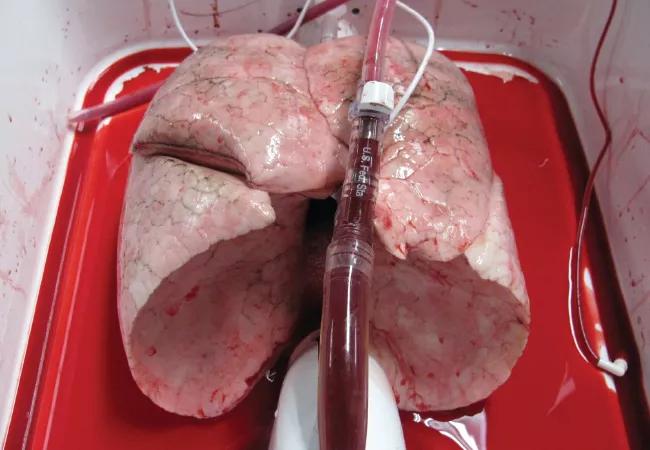
By Toshihiro Okamoto, MD, PhD, and Kenneth R. McCurry, MD
Cleveland Clinic is a non-profit academic medical center. Advertising on our site helps support our mission. We do not endorse non-Cleveland Clinic products or services. Policy
Cold storage of donor organs following procurement and prior to transplant decreases metabolic demand and consumption of energy and has been the standard method in transplantation for more than 40 years. Severe damage occurs when energy stores are depleted, including increased oxidative stress, inactivation of the sodium pump, cell death, and the release of proinflammatory cytokines. Additionally, following implantation, lungs frequently demonstrate varying degrees of ischemia reperfusion injury (IRI) resulting in postoperative graft dysfunction and complications that have short- and long-term implications. Thus, lung preservation and mitigation of IRI remain two of the main concerns in clinical lung transplantation.
Normothermic ex vivo organ perfusion is based on the rationale that providing oxygen and nutrition at physiologic temperatures on an ex vivo perfusion circuit prior to transplantation can prevent cold injury. Furthermore, it is possible that such ex vivo lung perfusion (EVLP) could be used to recondition and repair dysfunctional lungs after procurement, thus making them transplantable and resulting in an increased number of lungs available for transplantation.
EVLP could prove to be especially beneficial in situations when untransplantable, dysfunctional donor lungs have pulmonary edema or areas that remain atelectatic despite in situ recruitment. In EVLP, the high oncotic pressure of the perfusate draws water from the lung tissue and alveoli into the extra-pulmonary space, reducing pulmonary edema. Atelectasis can be eliminated through strategic ventilation techniques, which include recruitment maneuvers while on EVLP. Importantly, evaluation of donor lung function is possible during EVLP allowing ongoing assessment of lung function in response to therapeutic maneuvers.
In the U.S., 1,600-1,800 lung transplants are performed annually, with many patients dying prior to an organ(s) becoming available for them. Unfortunately, approximately 80 percent of lungs offered for transplantation cannot be utilized due to poor lung function caused by factors including pulmonary edema and atelectasis.
Based on these numbers, the use of EVLP to recondition dysfunctional lungs could have a dramatic impact on the number of patients whose lives could be saved with lung transplantation. Indeed, EVLP has been clinically available in Canada for several years, and the Toronto Lung Transplant Program has increased their lung transplant volume by approximately 30 percent using this technology. In the U.S., the clinical use of EVLP is in its infancy but holds great promise in those programs that have the resources and clinical expertise to utilize it.
We initiated EVLP research activity at Cleveland Clinic in 2011 in the McCurry lab. Several important questions regarding EVLP have been investigated using more than 50 rejected human lungs and over 30 porcine lungs. One of the most critical questions is the accuracy of evaluation of donor lung suitability for transplantation in EVLP, as this is key for patient safety. Parameters utilized to assess lung function for suitability for transplantation can include gas exchange (PaO2/FiO2), lung compliance, vascular resistance, lung weight and visual findings.
Deciding whether perfused lungs are transplantable is frequently challenging, especially when PaO2/FiO2 is in the marginal range of acceptability (around the current threshold of 300 mm Hg). In investigating this question, we identified the following important findings on the assessment of lung function in EVLP.
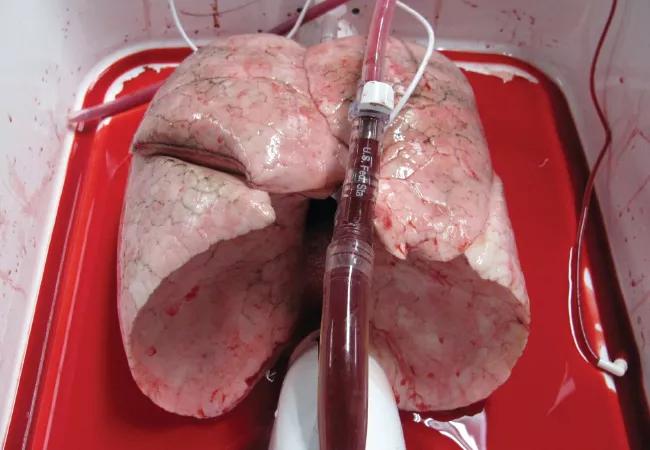
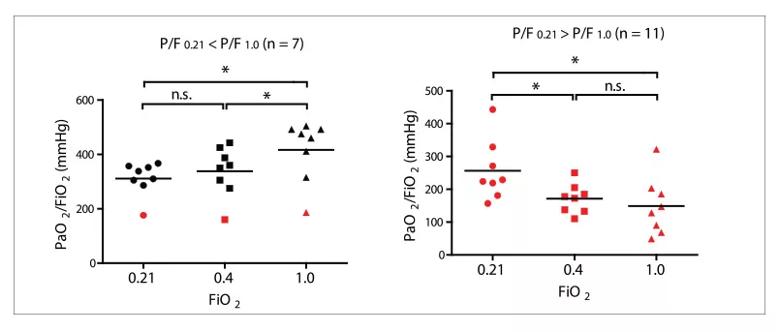
The relationship between P/F ratio at FiO2 0.21 and P/F ratio at FiO2 of 1.0 in porcine model. A, P/F ratio at three FiO2 in the group of P/F0.21 < P/F1.0 (group 1, n = 8). Seven cases were judged as suitable (black symbols), whereas one case was judged as not suitable (red symbol). B, P/F ratio at 3 FiO2 in the group of P/F0.21 > P/F1.0 (Group 2, n = 8). All eight cases were judged as not suitable. ]
Currently, Cleveland Clinic’s Lung Transplant Program is participating in a clinical trial of EVLP — A Phase 2, Multicenter, Open-Label Study to Measure the Safety of Extending Preservation and Assessment Time of Donor Lungs Using Normothermic Ex Vivo Lung Perfusion and Ventilation (EVLP) as Administered by the Sponsor Using the Toronto EVLP System — sponsored by United Therapeutics (Silver Spring, MD). In this study, donor lungs that are deemed not transplantable are procured and transported to a perfusion facility in Baltimore. During four to six hours of EVLP, lungs are reconditioned and assessed for transplantation suitability. When perfused lungs are judged as transplantable, they are transported to Cleveland Clinic, and lung transplantation is performed. Thus far, our patient survival utilizing this method is 100 percent.
This ability to utilize EVLP has brought other benefits as well. With EVLP as a backup, we can be more aggressive with lung procurement, resulting in conversion of some lungs that we thought needed EVLP into transplantable organs without using EVLP. Between February and September 2016, this has resulted in seven additional patients receiving transplants with 100 percent survival.
Overall, since initiating our clinical EVLP program, we have been able to provide transplantation to approximately 20 percent more patients in 2016 than at this time in 2015. We believe that the ability to offer the life-saving therapy of lung transplantation to more patients will continue to grow as we gain more experience and knowledge.
Dr. Okamoto is staff in the Transplantation Center. Dr. McCurry is Surgical Director of Lung Transplantation.

Technique may lay groundwork for personalized decision-making in procedural intervention

Cleveland Clinic series supports re-repair as a favored option regardless of failure timing

Cleveland Clinic study points to need for new strategies to curb addiction relapse

Tech-assisted self-selection concurred with clinician-assessed eligibility in >90% of cases
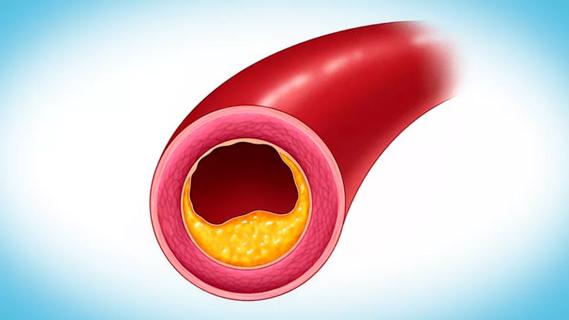
Support for a TAVR-first approach in patients with concurrent valve and coronary disease

Logistic feasibility supported for treating obstructive HCM under the REMS program
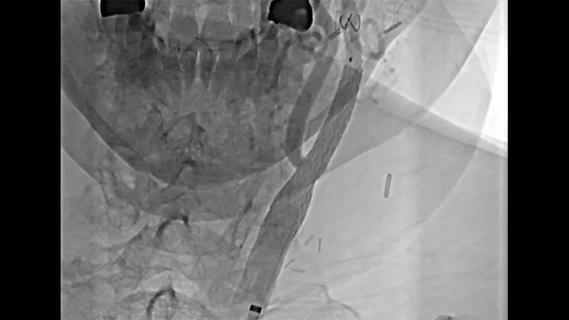
Insights from the Cleveland Clinic experience and a multispecialty alliance
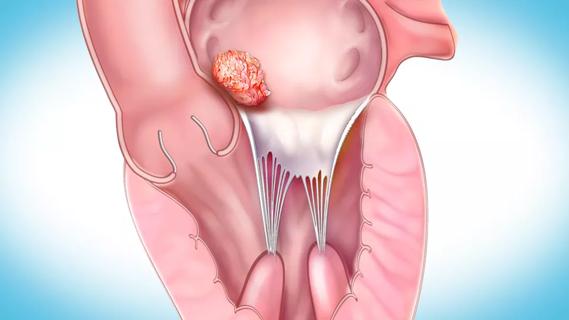
Recurrences were rare and survival robust in large Cleveland Clinic study